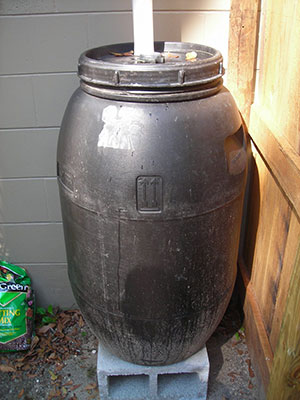5 Easy Steps to a Florida-Friendly Yard
What is Florida-Friendly Landscaping™? It’s a way of designing and protecting your home lawn and garden while preserving Florida’s natural resources.

With a few easy tips and tricks, Florida homeowners can save themselves time, money, effort, and energy in their yards while doing their part to protect the state’s ecosystems, wildlife, and water supply.
The Florida-Friendly Landscaping™ program delivers nine principles for the savvy gardener, like choosing the right plants, watering efficiently, and fertilizing appropriately. However, if you’re not ready to tackle all nine, check out the five easy tips below to get started with your Florida-Friendly yard.
1. Choose the Right Plants
Select low-maintenance plants suited to your yard conditions (light, soil, climate, and moisture level). Group plants with similar light, water, and nutritional needs together. Select plants that won’t require frequent pruning, and remove invasive plants from your yard. To create a personalized plant list for your home landscape, visit the Florida-Friendly Landscaping™ Program website.
2. Water Efficiently
Water plants only when they need it. Don’t be afraid of a little wilt—wilting shows you that plants are ready for water. Use low-volume irrigation, such as a drip or micro-spray system, in your plant beds, and run your irrigation system or sprinkler in the evening or early morning so wind and sun don’t evaporate the water before it can reach the roots. Make sure you are irrigating turf and plants, not sidewalks or driveways!
3. Collect and Use Rainwater
Install a rain barrel. You can buy one at a garden center or large home improvement center, or you can build a customized one to suit your needs. Rain barrels can help save some of Florida’s wet-season water for use during drier times of year. Replace impermeable surfaces like concrete or asphalt with permeable materials like mulch, gravel, or paver stones to allow rainwater to soak into the soil. Put mulch around plants and trees (12 inches from the trunk) to help keep soil moist.
4. Fertilize Appropriately
Fertilize only when needed, using a fertilizer containing slow-release nitrogen. Always read and follow the directions on your fertilizer bag label, taking into account the individual plant’s needs. Compost and other soil amendments can improve soil health, which in turn improves plant health. And remember, grass doesn’t always need fertilizer to stay green. Adding supplemental potassium in the winter and iron in the summer are other options for improving color.
5. Raise Mower Blades
Always use the highest recommended setting for your grass species. Higher mowing encourages deeper rooting, which allows grass to survive dry spells better and resist pests and disease more easily. See Mowing Your Florida Lawn for more information on the highest recommended mowing heights for each grass species.
For more information on Florida-Friendly Landscaping™, contact your county Extension office.
